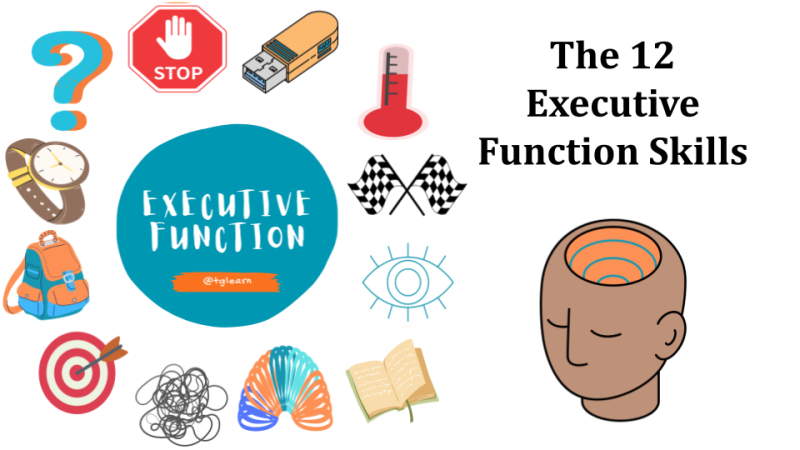From remembering assignments to being punctual for practice, strong executive function skills play a pivotal role in navigating daily life effectively. In fact, one’s ability to apply and utilize Executive Function skills efficiently is the best indicator of lifelong success! In kindergarten through high school classrooms, we use Executive Function to help our students build the mental processes that allow them to plan, focus their attention, remember and follow instructions, and juggle multiple tasks simultaneously. These skills also enhance academic performance, contribute to building robust relationships, and even help reduce anxiety.
The role of Executive Function Skills in Learning
Executive function encompasses a set of cognitive processes and mental skills essential for effective task execution and problem-solving. The skills are acquired over time through direct instruction, practice and reinforcement. In practical terms, executive functioning refers to how the brain manages, plans, organizes, and sets goals to complete tasks efficiently and
thoroughly. For students, strong executive functioning is crucial for becoming independent and successful adults.
These essential features of executive function manifest in our ability to:
Why Are These Skills Crucial for Students?
o Independence: Strong executive functioning helps students become independent adults.
o Academic Performance: These skills enhance learning outcomes.
o Relationship Building: Effective communication and adaptability contribute to robust relationships.
o Anxiety Reduction: Well-developed executive functions can reduce anxiety.
Variability Among Individuals:
o Everyone Has Them: All individuals possess executive functions.
o Unique Strengths and Challenges: Each person’s abilities vary.
o Late Development: Some functions may fully develop only in late twenties.
What are some strategies to help?
In classrooms, explicit teaching methods help pave the way for success!

